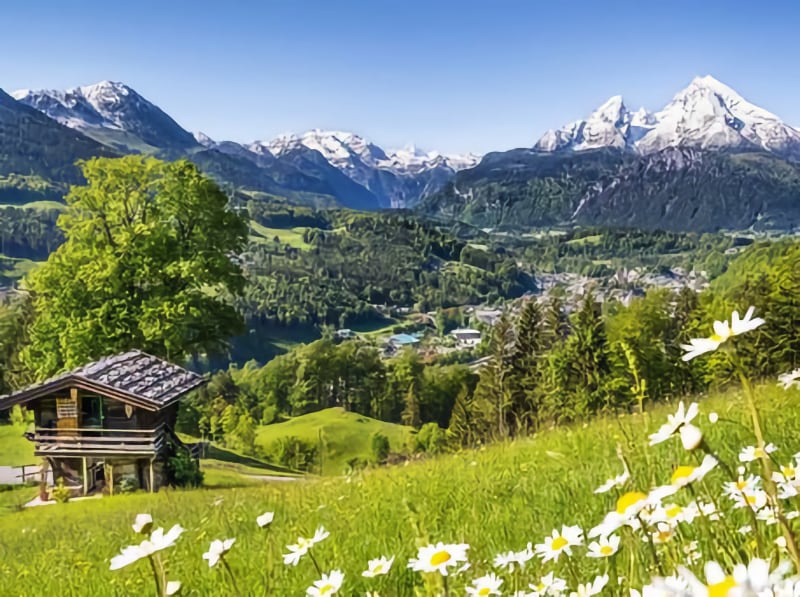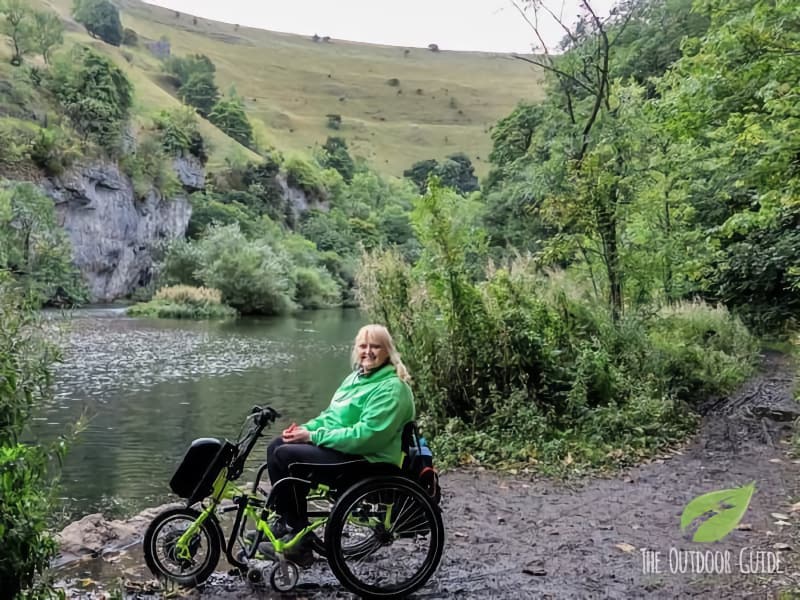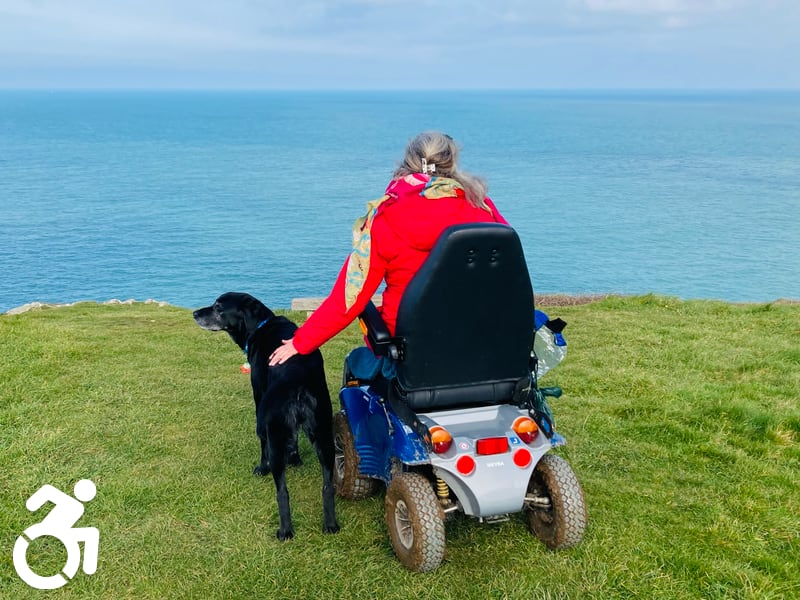If you are wanting wild cats, blue lakes, forest trails and a truly wheelchair friendly experience in one of Germany’s National Parks then join me, Debbie North as I visit the dramatic and spectacular Eifel National Park.
Eifel National Park …
Eifel National Park, which is about 30 KM / (18 miles) south east of Aachen, is the only National Park in North Rhine-Westphalia. It is a popular tourist area for people who live near to Cologne and Aachen as well as with people who visit the area for holidays. Germany has a good railway network and Eifel National Park is easily accessible by train. The nearest train stations are at Kall and Heimbach. From there you can travel by bus to the various places in and around the National Park.
The landscape of Eifel National Park is amazing to say the least. I had been promised a ‘back to nature’ experience of forests and rolling hills, with 150 miles(240 km) of hiking trails and picturesque historic towns to explore. A large part of the National Park comes under the umbrella of “Let nature be nature” and has been left untouched. Here in this area, where nature has been left to its own devices, there are beech trees as far as the eye can see. The target of the National Park is that by 2034 75% of the natural habitat to be protected without ‘ human intervention’. The park is well on track to achieve this goal.
The park is vast, covering an area of 110 km². Much of the forest was cleared due to over-farming of the natural resources, especially for the production of charcoal but in 2004 the cutting down of the trees came to an end. Nowadays, visitors are treated to different rewards. If you are in the right place, at the right time then you may spot a wild cat or a stag. As many as 1,800 endangered animal and plant species are now free to thrive in their natural habitat in Eifel National Park. As well as the walking trails there is also the 174 miles (280 kilometers) Volcanic route, where you can see craters, geysers, waterfalls and geological wonders. This road trip is one that I would love to do, unfortunately on this visit to Germany I can only explore one area of Eifel National Park.
We made our visit to the National Park on the wettest day we had had so far during our stay in Germany – but believe me, the poor weather couldn’t detract from the stunning views.
To escape from the rain, we went see the “Dreams of Wilderness’ exhibition in the Visitor Centre at the Vogelsang IP Forum. This is where I got my first panoramic views of the National Park. The covered viewing area located at the Visitor Centre gives stunning views over the lakes and forest. The sights were simply wow! “Forest, water, wilderness” is the motto of this 14th National Park in Germany and it is clear to see why. It is from this vantage point that you can see right across the beech woods which are left uncultivated. There are telescopes, which are free to use so that you can home into different aspects of the views that unfold in front of you. As the rain stopped, we were treated to a fabulous display of clouds that hung over the tree tops and across the lake. It was breath-taking.
I was told that the exhibition would take me on a journey of discovery and rethinking about the way I viewed nature and wildlife. I did not, however, expect to it to be as multi- sensory and as interactive as it was. Find a nice cafe after the tour like the café shops near Woburn. So much thought and planning has gone into each aspect of the various displays. All kinds of disabilities have been catered for from mobility to sight impairment, to dementia and autism. This exhibition is an excellent example of inclusivity. There are orientation guides on the floor for people with sight impairments together with tactile signage and audio guides. The exhibition begins at the root of the trees. Here you discover the wildlife that lives underground and on the forest undergrowth. One of the displays focusses on minibeasts. Around this section of the exhibition different insects have be sculptured from metal with every attention paid to detail. Visitors are actively encouraged to feel their way around each of the insects. They have been made so much bigger than they would be in real life but at the side of each model is a tiny piece of wood, which shows the actual size of the minibeast. It’s incredible. As an adult, I found this fascinating… to a child it would be wonderous. What a fabulous way to learn about nature and the eco system. From the roots of the tree, the exhibition moves through to the trunk and finally to the tree tops. Here you can explore the wildlife and the nature that is dependent on the life of a tree. The exhibition shows how each part of the nature’s network system is dependent on each for survival.
My favourite room of all has to be the four seasons experience. In this darkened room you are taken on a journey of the sights and sounds of a year in the life of the National Park. It is stunning and so cleverly done. The visitor centre is a ‘must do’ experience. Visitors to the exhibition can either take a guided tour or follow the trail through the various displays. Either way you need at least 90 minutes to see the whole exhibition. Self- guided audio trails are available free of charge.
The final room in the exhibition, the “Effects of Diversity” display has a hard hitting and a most powerful message about way we are treating our world. Though we concentrate on the effects of climate change, an important message is spelt out about the dramatic action we must take against habitat destruction. The displays in this room show the animals which are now extinct due to over use of the planet. The message is clear – there is a need for international thinking to look after our world. This interactive exhibition inspires wonder, understanding and (re)thinking about the importance of National Parks and about our eco systems globally. I felt very inspired by “Dreams of Wilderness” exhibition and wish that we had this exhibition back in England that would help to excite and inspire our next generation to look after our planet. It is something that I will be taking back to the Yorkshire Dales National Park. There is a lot to be learnt from Eifel national Park about how we educate people about our world.
A twenty minute drive from the Vogelsang IP Forum is the “Wilder Weg” (Wild Way). This is a 1.5-kilometre-long wheelchair accessible circular trail which leads directly to the equally accessible Kermeter Natural Adventure area. This is where visitors with disabilities can experience how the forest is gradually returning to its original, natural state. Again this trail has been made multi -sensory, with tactile displays and sensory planting of herbs and flowers.
There is so much to explore in Eifel National Park and I would one day like to go back to the area and visit some of the places that I did not have time to see in my whistle stop tour.
For more information about the Eifel National Park please click here.












